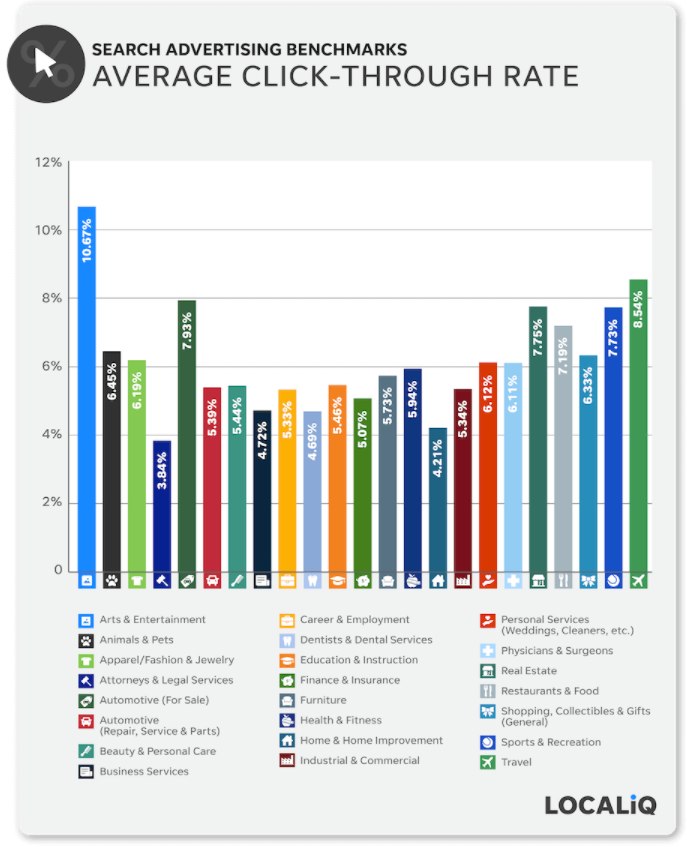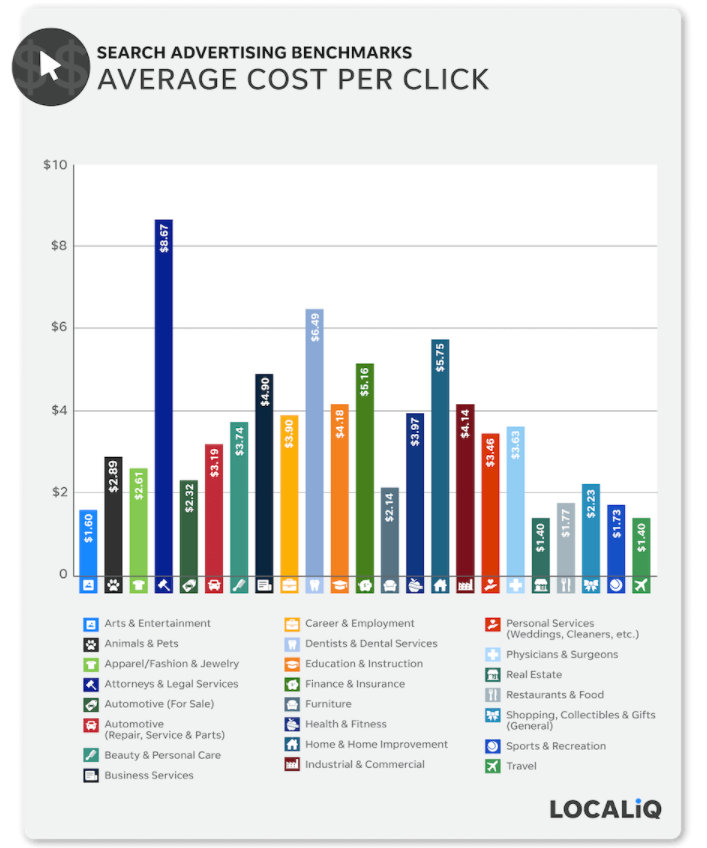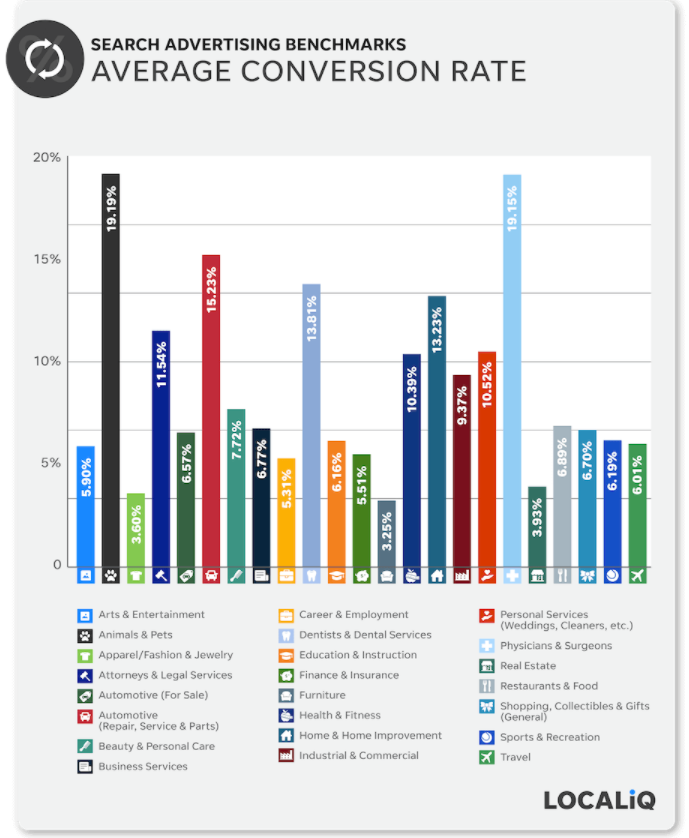When it comes to Pay-Per-Click marketing (PPC), there are so many metrics to measure that it’s easy to lose sight of the most important ones. To truly succeed with PPC marketing you need to constantly measure and review your results to make improvements. To make sure you keep on track to reach your goals, you need to be certain you’re measuring and reviewing the right metrics, specific to your company. The best way to do this is by setting PPC KPIs that align with your marketing goals and become your benchmark for success.
How to Choose the Right PPC KPIs
The key is to get strategic about how you choose KPIs, and not be distracted by vanity metrics that stop you from achieving your ideal campaign results.
Every business and every campaign is different and therefore there is no definitive list of PPC metrics that every company should track. If only it was that easy! Instead, you must decide which KPIs to set based on your marketing goals and industry average. Then, set results targets that are specific to your PPC campaigns.
While there is no one size fits all clear cut rules for setting PPC KPIs, there are core KPIs which are more worth your salt than others. To give you an idea of the main PPC KPIs you should be tracking, keep reading while we explain.
Top PPC Marketing KPIs
1. Search Impression Share
We’ll begin with one of the simplest PPC metrics. As you may know, impressions tell you how many people saw your ad. Impression Share is the share of the impressions over time, which you can compare with previous periods. This doesn’t mean a user clicked on your ad and in our opinion is not a key indicator of your campaign’s performance. However, Impression Share can tell you a number of important details:
- If your impression share is higher than previously, but your clicks haven’t increased, it can mean something is wrong with the content or targeting of your ad. For example, the copy is not resonating with your target audience, your keywords need to be better optimized or the copy isn’t attention grabbing.
- Impression Share also gives you an idea of your ad performance compared to your competitors. If your impression share is 30%, you know that 70% is going to your competitors and you can tweak your ad content and targeting to improve your share.
What’s a good Impression Share?
In an ideal world it would be 100%, but as close as you can get to that is good, preferably above 70%.
If you’re competing against large organizations, you might choose to switch up your strategy and play the long game to increase your Impression Share. Alternatively you could focus on aligning your organic content and SEO strategy with PPC campaigns to increase your authority with search engines and improve Impression Share.
2. Average Click-Through Rate (CTR)
Like impressions, clicks are good for adding context to why your ad is performing well or underperforming. While clicks don’t provide loads of insight alone, click-through rate CTR does! It tells you how many people, out of those that viewed your ad, clicked on it. Setting KPIs to measure and improve ad CTR is important for any company as it can help you determine how to tweak ad content, targeting or landing pages to better suit your audience and campaign goal.
What makes a good CTR?
Unfortunately this isn’t clear cut and depends on several factors specific to your company, industry and the type of ad itself. For display ads the average CTR is 0.46% and for search ads the average CTR is 3.17%. On average for both, a good CTR is 1.9%. Like we said this can differ for each industry, outlined here by WebFX or seen in the graph below.

(Image Source: LOCALiQ.com via SearchEngineJournal)
3. Average Cost Per Click (CPC)
Setting KPIs for CTR is not enough on its own – it needs to be paired with CPC. Combined, you can use this metric to set targets for how much you expect to spend per click. While CTR is important, if each click costs a lot, it could be detrimental to your goals and is a sign you need to make changes.
Tip: To ensure your CPC isn’t high before you run your campaign, choose to target keywords with a lower CPC, for example by using more long-tail keywords. Tools like Semrush, Ahrefs and Ubersuggest tell you the average CPC of each keyword so you can choose wisely for your budget.
For more tips on improving your ad campaign ROAS, check out our blog.
What’s a good CPC?
Again – you guessed it – it depends on a number of factors. Whether a CPC is good for your business or not, differs drastically depending on the price of your product. For this reason you need to set a budget for the maximum CPC you are willing to pay. Companies with higher budgets tend to allow a higher CPC, in order to outbid competitors.
To get an idea of what’s a good CPC for your industry, take a look at the graph below:

(Image Source: LOCALiQ.com via SearchEngineJournal)
4. Conversion Rate
When setting PPC KPIs, conversion rates are one of the most important. The conversion rate refers to the number of ad clicks that turn into conversions. Your company might decide to track a few different types of conversions for each stage of your marketing funnel or campaign. By measuring conversion rates as a KPI, it can tell you where you need to optimize your campaign landing page, different stages of your funnel and user experience. For example, if your ad copy is generating clicks, but your conversion rate is low, what in your landing page content or funnel process is stopping users from converting?
What makes a good conversion rate?
On average a good conversion rate is around 3.75%, but again this differs based on the type of product or service you’re selling. For example for B2B enterprise businesses, where the sales process is a lot longer but price of sales are high, conversion rates may be lower but the impact of those conversions on business much higher.
Industry benchmarks can be seen here:

(Image Source: LOCALiQ.com via SearchEngineJournal)
5. Cost Per Conversion/ Cost Per Acquisition (CPA)
This PPC metric tells you how profitable your PPC campaigns are. The average CPA refers to the average amount you spent to convert a user into a sale or another touchpoint. If you plan how much you want to spend, you can choose target CPA bidding so you don’t spend more than your budget allows. Google explains more about this here. Although this isn’t always the best bidding strategy for every ad campaign to begin with.
What determines a good CPA?
If you work for an e-commerce company that sells cosmetics, work out the cost of an average sale to determine your CPA. Alternatively, if your sales process is longer, work out what each sale generates for your business in the long run, and use that as your conversion cost.
Based on this information, set a target internally for what’s a good CPA for your organization and for your budget.
How to Track Your PPC KPIs: Introducing Mediatool
These are the core PPC metrics to turn into marketing KPIs. But it doesn’t stop there. KPIs need regular measurement and review to ensure you reach your goals. To make sure you accurately measure your PPC KPIs, visually set targets and track how your campaigns are performing against them in one place – in Mediatool. Get visibility of your PPC KPIs, alongside other marketing results like social media KPIs and much more.
By bringing your marketing results data together into one simple dashboard, you can easily spot opportunities to improve future PPC campaigns. Better yet, your whole PPC team can access the same information so you can rest assured everyone is working towards the same shared targets.
To book a tour of the platform, click here.




